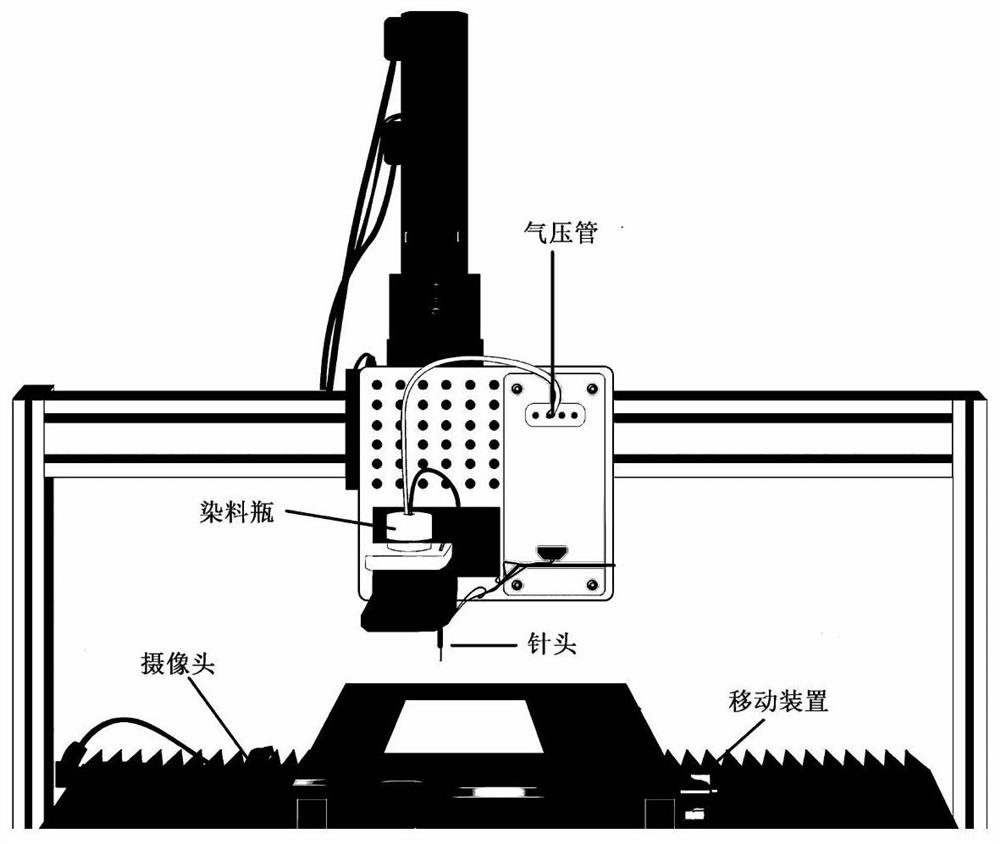Method for improving inkjet printing performance of antibacterial silk fabric by adopting plasma-chitosan technology
A technology of plasma and chitosan, which is applied in the field of silk fabrics, can solve the problems of changing the feel and resilience of silk fabrics, pollution, waste of alkali and urea, etc., to avoid the use of chemicals and pollution, reduce environmental pollution, and improve durability sexual effect
- Summary
- Abstract
- Description
- Claims
- Application Information
AI Technical Summary
Problems solved by technology
Method used
Image
Examples
Embodiment 1
[0033] The method that adopts plasma-chitosan technology of the present embodiment to improve the inkjet printing performance of antibacterial silk fabric comprises the following steps:
[0034] Preparation of S1 nano-chitosan
[0035] 10g of high molecular weight chitosan was added to 600ml of 2% acetic acid solution by mass, fully stirred at 80°C to dissolve it; 60ml of 3% by mass was added dropwise. 2 o 2 Solution, continue to react for 2h; bake after neutralizing the upper layer residue with distilled water; add 4ml ethanol to the lower layer solution, let stand for 24h to precipitate chitosan, obtain degraded low molecular weight chitosan after centrifugal drying. Reducing the molecular weight of chitosan can make it more permeable and antibacterial.
[0036] Under the conditions of a temperature of 20°C and a pH value of 3, after dissolving 0.25g of degraded low molecular weight chitosan, 0.5g of citric acid, 0.1g of Span-80 and 0.25g of TPP in 50ml of distilled water,...
Embodiment 2
[0083] The method that adopts plasma-chitosan technology of the present embodiment to improve the inkjet printing performance of antibacterial silk fabric comprises the following steps:
[0084] Preparation of S1 nano-chitosan
[0085]The high molecular weight chitosan of 9g is joined in the acetic acid solution of 2% by mass percent in 500ml, fully stirs it to dissolve at 60 ℃; 2 o 2 Solution, continue to react for 1.5h; bake after neutralizing the upper layer residue with distilled water; add 3.5ml ethanol to the lower layer solution, let stand for 23h to precipitate chitosan, and obtain degraded low molecular weight chitosan after centrifugal drying.
[0086] Under the conditions of temperature 21°C and pH value 2.5, after dissolving 0.1g of degraded low molecular weight chitosan, 0.1g of citric acid, 0.3g of Span-80 and 0.1g of TPP in 50ml of distilled water, use an ultrasonic disperser at 450w Disperse for 25 minutes to obtain nano-chitosan. After measurement, the part...
Embodiment 3
[0093] The method that adopts plasma-chitosan technology of the present embodiment to improve the inkjet printing performance of antibacterial silk fabric comprises the following steps:
[0094] Preparation of S1 nano-chitosan
[0095] The high molecular weight chitosan of 11g is joined in the acetic acid solution of 2% by mass percent in 700ml, fully stirs it to dissolve at 70 ℃; 2 o 2 Solution, continue to react for 2.5h; bake after neutralizing the upper layer residue with distilled water; add 4ml ethanol to the lower layer solution, let stand for 24h to precipitate chitosan, obtain degraded low molecular weight chitosan after centrifugal drying.
[0096] Under the conditions of temperature 20°C and pH value 3.5, after dissolving 0.2g of degraded low molecular weight chitosan, 0.3g of citric acid, 0.5g of Span-80 and 0.2g of TPP in 50ml of distilled water, use an ultrasonic disperser at 450w Disperse for 30 minutes to obtain nano-chitosan. After measurement, the particle...
PUM
| Property | Measurement | Unit |
|---|---|---|
| Concentration | aaaaa | aaaaa |
| Particle size | aaaaa | aaaaa |
Abstract
Description
Claims
Application Information
 Login to View More
Login to View More - R&D
- Intellectual Property
- Life Sciences
- Materials
- Tech Scout
- Unparalleled Data Quality
- Higher Quality Content
- 60% Fewer Hallucinations
Browse by: Latest US Patents, China's latest patents, Technical Efficacy Thesaurus, Application Domain, Technology Topic, Popular Technical Reports.
© 2025 PatSnap. All rights reserved.Legal|Privacy policy|Modern Slavery Act Transparency Statement|Sitemap|About US| Contact US: help@patsnap.com



